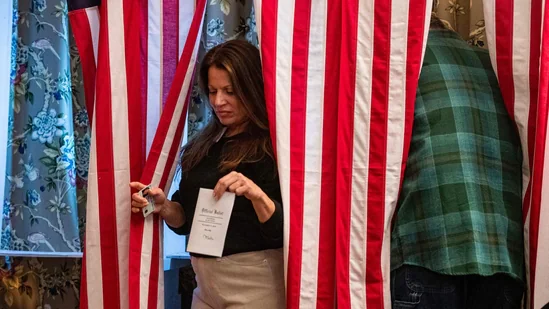US Election Results: Three key takeaways from early voting trends
As the US heads into Election Day, over 78 million ballots have already been cast in 47 states and the District of Columbia and pre-election voting trends are offering critical insights into voter behaviour and who is expected to win the rac to White House. Here are three significant takeaways:

Early Voting Turnout Declines from 2020
The 2024 early voting turnout has decreased significantly compared to the 2020 pandemic election. While over 110 million Americans voted early in 2020, this year's pre-election voting is expected to constitute around 50% of the total ballots. This aligns very more closely with the 2022 midterms. An overall pre-election voting is down, in some states more voters chose to vote in person early than they did in 2020, considering pandemic was at its peak.
States of Georgia and North Carolina witnessed record early in-person voting, though mail voting has decreased due to stricter regulations.
Republicans Up Pre-Election Vote Share
Following Trump campaign vote rhetoric more Republicans have cast early in-person and in-mail votes, a major shift from messaging against pre-election voting in 2020.
Across 27 states registered Democrats have cast 37% of pre-election ballots, while registered Republicans have cast 35%. In last election 42% Democrats opted to vote against 30% Republicans.
In key battlegrounds like Pennsylvania, Arizona, and North Carolina, the Republican early vote share has risen.
In Arizona, 41% of pre-election voters have been Republican, whereas, Nevada Republicans have increased their share by only 1 point from 2020 to 37%. In North Carolina, where Trump rallied with supporters of the final day of his campaign, Republicans have accounted for 33% of the pre-election vote. In critical Pennsylvania, Republicans have made up 33% of the pre-election vote
Persistent Yet Narrowing Gender Gap
The gender gap in early voting remains significant, with women casting more ballots than men, especially in states like Georgia and Pennsylvania. However, this gap is slightly narrower than in 2020, both in percentage and total numbers. This change reflects a broader pattern of reduced early voting overall.
These trends underscore a dynamic electoral environment, with implications for turnout and partisan momentum as Election Day unfolds.
Disclaimer: The copyright of this article belongs to the original author. Reposting this article is solely for the purpose of information dissemination and does not constitute any investment advice. If there is any infringement, please contact us immediately. We will make corrections or deletions as necessary. Thank you.
Title:US Election Results: Three key takeaways from early voting trends
Url:https://www.investsfocus.com








